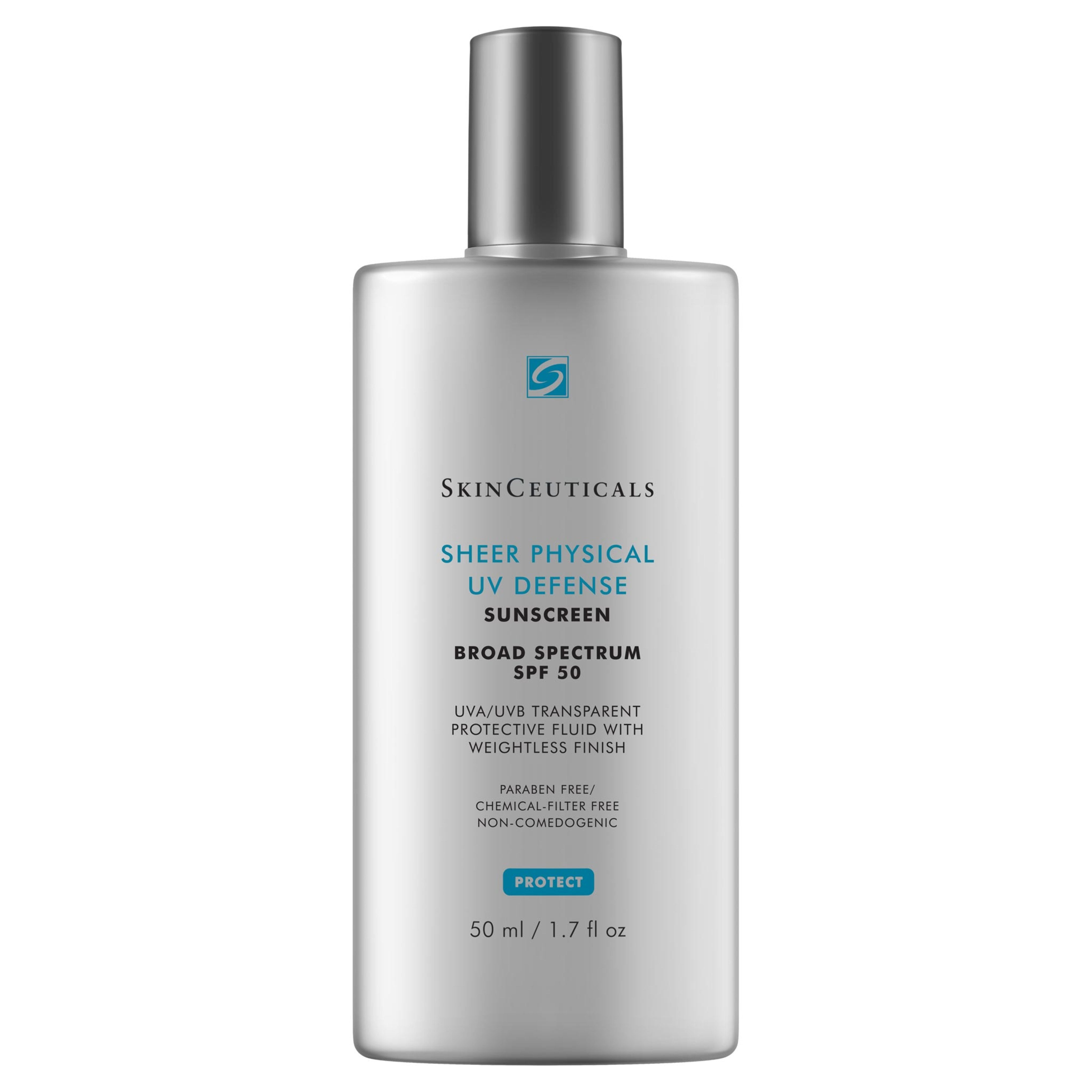PRODUCT REVIEW

Cantabria Labs Heliocare 360 Mineral Tolerance Fluid SPF 50
Cheaper alternatives
Product summary
What can the product work for?
Sun protection
Anti-blemish
Anti-aging
Evens skin tone
Moisturizing
Anti-oxidation
Honesty check
How honest is this product?
| Promise | Can it deliver? |
|---|---|
| Sun protection |
Buy now
We receive a small commission for purchases made through these links at no cost for you. Thank you for your support! Learn more
Can it cause trouble?
- Overall product irritation risk
- Acne & comedogenic risk ingredients: 1
Potential irritants
Comodogenic ingredients
User reviews (0)
Similar products & dupes
 Cantabria Labs - Heliocare 360 Mineral Tolerance Fluid SPF 50 |  Heliocare - 360 Mineral Tolerance Fluid SPF 50 |  Heliocare 360° - Mineral Tolerance Fluid |  Dr Dennis Gross - Skincare All Physical Lightweight Wrinkle Defense SPF30 |  NEOSTRATA - Sheer Physical Protection SPF 50 |  SkinCeuticals - Sheer Physical UV Defense SPF 50 |  SKIN - Mineral Radiance UV Defense SPF 50 |  La Roche-Posay - Anthelios Mineral Tinted Ultra-Fluid Face Sunscreen Lotion SPF50 For Sensitive Skin |  Supergoop! - Glowscreen Sunscreen SPF 40 PA+++ |  Clinique - Superdefense City Block SPF 50+ Daily Energy + Face Protector |  CeraVe - Hydrating Mineral Face Sunscreen Lotion SPF 50 with Zinc Oxide | |
| Price | |||||||||||
| WIMJ similarity score |
61%
|
47%
|
42%
|
41%
|
40%
|
38%
|
38%
|
37%
|
37%
|
37%
| |
| SPF | SPF 50 | SPF 50 | SPF 50 | SPF 30 | SPF 50 | SPF 50 | SPF 50 | SPF 50 | SPF 40 | SPF 50 | SPF 50 |
| Key ingredients |
| Common:
Other: | Common:
Other: | Common:
Other:
| Common:
Other:
| Common:
Other: | Common:
Other: | Common:
Other: | Common:
Other: | Common:
Other: | Common:
Other:
|
| Irritancy | IRRITANCY
MEDIUM
| IRRITANCY
MEDIUM
| IRRITANCY
MEDIUM
| IRRITANCY
MEDIUM
| IRRITANCY
LOW
| IRRITANCY
LOW
| IRRITANCY
LOW
| IRRITANCY
LOW
| IRRITANCY
MEDIUM
| IRRITANCY
LOW
| IRRITANCY
LOW
|
| Potential Irritants |
|
|
|
|
|
|
|
|
|
|
|
| All ingredients |
|
|
|
|
|
|
|
|
|
|
|
Ingredients & concentrations
All ingredients
Key Actives
Potential irritants
Comodogenic ingredients
All ingredients
Ingredient list view
Water, Dimethicone, Isododecane, C12-15 alkyl benzoate, Hydrogenated polydecene, Titanium dioxide, Zinc oxide, Butyloctyl salicylate, Alumina, Styrene/acrylates copolymer, Phenethyl benzoate, Peg-9 polydimethylsiloxyethyl dimethicone, Nylon-12, Polypodium leucotomos leaf extract, Ethylhexyl ferulate, Ferulic acid, Caffeic acid, Physalis angulata extract, Caprylyl glycol, Melanin, Camellia sinensis extract, Arabidopsis thaliana extract, 3-o-ethyl ascorbic acid, Isohexadecane, Hydrogen dimethicone, Phenylpropanol, Polyhydroxystearic acid, Magnesium sulfate, Tocopheryl acetate, Dimethicone/peg-10/15 crosspolymer, Propanediol, Triethoxycaprylylsilane, Propylene carbonate, Caprylic/capric triglyceride, Panthenyl triacetate, Butylene glycol, Ethyl linoleate, Oleyl alcohol, Pentylene glycol, Oxothiazolidine, Dipropylene glycol, Sodium citrate, Palmitoyl hydroxypropyltrimonium amylopectin/glycerin crosspolymer, 1,2-hexanediol, Lecithin, Sodium benzoate, Tocopherol, Hydrogenated lecithin, Ci 77492, Ci 77491, Ci 77499
Sources
- Dimethicone as a protective ingredient in topical medications
- Final Report on the Safety Assessment of Dimethicone Copolyol
- Safety Assessment of Polyene Group as Used in Cosmetics
- A review of inorganic UV filters zinc oxide and titanium dioxide
- Risk assessment of zinc oxide, a cosmetic ingredient used as a UV filter of sunscreens
- Characterization of the UVA protection provided by avobenzone, zinc oxide, and titanium dioxide in broad-spectrum sunscreen products
- Ultraviolet Protection Properties of Commercial Sunscreens and Sunscreens Containing Zno Nanorods
- ZnO nanoparticles and organic chemical UV-filters are equally well tolerated by human immune cells
- Safety assessment of Salicylic Acid, Butyloctyl Salicylate, Calcium Salicylate, C12-15 Alkyl Salicylate, Capryloyl Salicylic Acid, Hexyldodecyl Salicylate, Isocetyl Salicylate, Isodecyl Salicylate, Magnesium Salicylate, MEA-Salicylate, Ethylhexyl Salicylate, Potassium Salicylate, Methyl Salicylate, Myristyl Salicylate, Sodium Salicylate, TEA-Salicylate, and Tridecyl Salicylate
- Safety Assessment of Alumina and Aluminum Hydroxide as Used in Cosmetics
- Amended Safety Assessment of Acrylates Copolymers as Used in Cosmetics
- Mechanistic insights in the use of a Polypodium leucotomos extract as an oral and topical photoprotective agent
- Ferulic Acid: Therapeutic Potential Through Its Antioxidant Property
- Ferulic acid stabilizes a solution of vitamins C and E and doubles its photoprotection of skin
- Antioxidant Properties of Ferulic Acid and Its Possible Application
- Repair of Damaged DNA by Arabidopsis Cell Extract
- Antioxidant Ability and Stability Studies of 3-O-Ethyl Ascorbic Acid, a Cosmetic Tyrosinase Inhibitor
- Safety Assessment of Magnesium Sulfate as Used in Cosmetics
- Panthenyl Triacetate Transformation, Stimulation of Metabolic Pathways, and Wound-Healing Properties in the Human Skin
- Ethyl linoleate inhibits α-MSH-induced melanogenesis through Akt/GSK3β/β-catenin signal pathway
- Double-blind, randomized, placebo-controlled study of a lotion containing triethyl citrate and ethyl linoleate in the treatment of acne vulgaris
- The influence of alkane chain length on the skin irritation potential of 1,2-alkanediols
- Vitamin E in dermatology